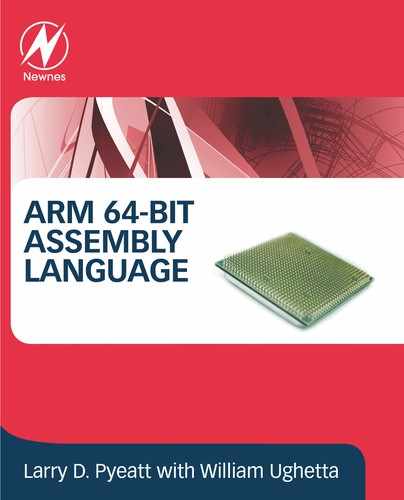Book Description
ARM 64-Bit Assembly Language carefully explains the concepts of assembly language programming, slowly building from simple examples towards complex programming on bare-metal embedded systems. Considerable emphasis is put on showing how to develop good, structured assembly code. More advanced topics such as fixed and floating point mathematics, optimization and the ARM VFP and NEON extensions are also covered. This book will help readers understand representations of, and arithmetic operations on, integral and real numbers in any base, giving them a basic understanding of processor architectures, instruction sets, and more.
This resource provides an ideal introduction to the principles of 64-bit ARM assembly programming for both the professional engineer and computer engineering student, as well as the dedicated hobbyist with a 64-bit ARM-based computer.
- Represents the first true 64-bit ARM textbook
- Covers advanced topics such as fixed and floating point mathematics, optimization and ARM NEON
- Uses standard, free open-source tools rather than expensive proprietary tools
- Provides concepts that are illustrated and reinforced with a large number of tested and debugged assembly and C source listings
